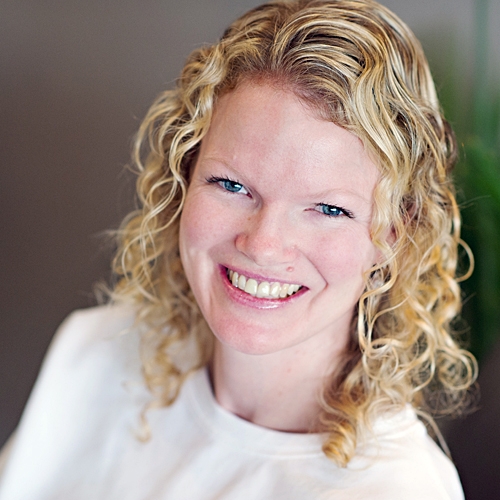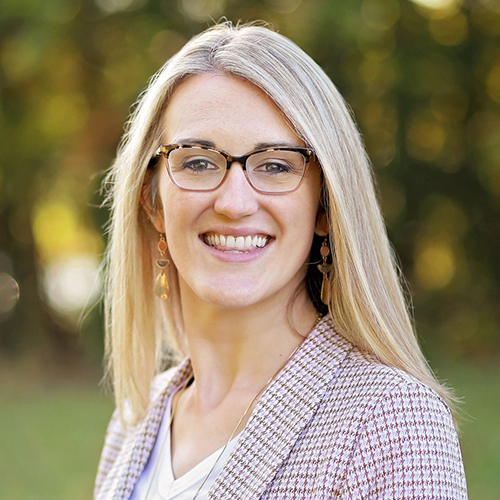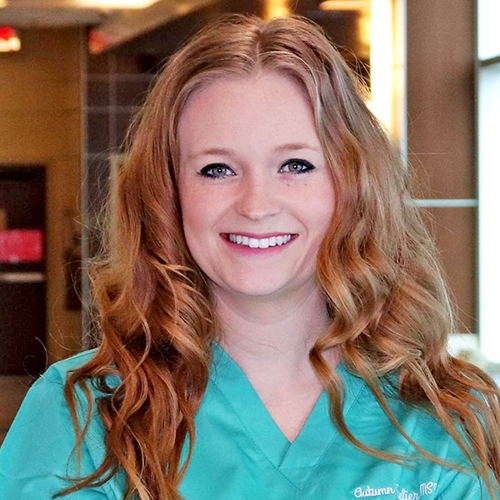
GOLD Midwifery Conference 2024
This is a series of lectures originally presented at our 2024 GOLD Midwifery Online Conference. It is suitable for all skill levels and is a perfect fit for Midwives, Doulas, Childbirth Educators, IBCLCs, Breastfeeding Counselors, Physicians, Dietitians and anyone else working or studying within the maternal-child health industry.
Our 10th annual conference offers an amazing line-up of speakers who provide a wide range of both research and clinical skills to assist in the advancement of your practice. Increase your knowledge base and learn practical skills that will help to improve outcomes for the families in your care.
Gain new insights into iron deficiency during pregnancy, gestational diabetes, hypertension in pregnancy, managing asthma, debriefing after birth, somatic movement and so much more. With expert speakers, such as Augustine Colebrook, Illiyin Morrison, Hazel Keedle, Claire Meek, Silke Powell and Cassandra Aho to name just a few, this conference promises to be an inspiring and practice-changing event!


Silke has practiced as a midwife in a range of birth environments for many years. She is also a midwifery educator, working with undergraduate and postgraduate midwives. She originally hails from Yorkshire, UK, but has lived and worked for many years in Marlborough, New Zealand, and more recently has 'crossed the ditch' to Tasmania, Australia.
This presentation is developed from the findings of a structured review of evidence, entitled 'How effective is the presence of meconium-stained amniotic fluid as a predictor of neonatal morbidity and mortality?' undertaken as a Master of Midwifery dissertation at the University of Leeds, UK, back in 2005. A discussion of her findings – 'Holy Meconium' - was published in Essentially MIDIRS in 2013 and she has since presented at conferences. She continues to keep abreast of theories, research findings and practice implications relating to meconium.
2) Explain the concept of meconium passage as a normal, physiological event
3) Describe assessment and management practices of labours with meconium liquor in relation to the evidence
4) Describe assessment and management practices of infants born through meconium liquor in relation to the evidence /P
In 1903, Whitridge Williams declared “A characteristic sign of impending asphyxia is the escape of meconium”. It’s unlikely this statement was founded on robust, peer-reviewed research, though there has since been research a-plenty based on the underlying inference that in-utero meconium passage is associated with poorer outcomes. Had researchers instead begun with questioning if meconium is indeed an independent marker for those poorer outcomes, then we may nowadays have a better understanding of why most infants with a poor outcome do not pass meconium in labour (Greenwood et al 2003) and most babies exposed to meconium liquor are born in good condition.
Using the findings from an extensive review of the literature, this presentation will begin by exploring the theories of meconium passage. It will review the research that is currently shaping our meconium guidelines (meconium as pathological) and analyse the data that supports the concept of meconium passage as a physiological, i.e., ‘normal’, event. Then, using the evidence, it will critique the current assessment and management practices of meconium labours and infants born through meconium.
Does meconium deserve its reputation as an omen for poor outcomes? Or have we been unjustly scared meconiumless??


Dr. Sinéad Dufour is an Associate Clinical Professor in the Faculty of Health Science at McMaster University. She teaches and conducts research in the Schools of Medicine, Nursing and Rehabilitation Science. She completed her MScPT at McMaster University (2003), her PhD in Health and Rehabilitation Science at Western (2011), and returned to McMaster to complete a post-doctoral fellowship (2014). Her current research interests include: conservative approaches to manage pelvic floor dysfunction, pregnancy-related pelvic-girdle pain, and interprofessional collaborative practice models of service provision to enhance pelvic health and pain care. Sinéad stays current as a pelvic health physiotherapist through her practice at The World of my Baby (the WOMB), a company in which is a partner.
Sinéad is an active member of several organizations charged with optimizing perinatal care and pelvic health and has led and contributed many clinical practice guidelines to improve care provision. Sinéad is also a sought out expert to speak at conferences around the world and currently consults with several companies that focus on pelvic health and perinatal care such as FIFA Women's Football, Lansinoh, and Urospot. Her passion for optimizing perinatal care and promoting pelvic stemmed from her own experience becoming a mother of twins.
1) Explain the evolution of science and understanding of pregnancy related pelvic girdle pain
2) Describe the current best practice recommendations related to pregnancy related pelvic girdle pain
3) Apply current best practice principles to clinical practice from an interprofessional perspective
Pregnancy related pelvic girdle pain (PPGP) is a common presentation representing a significant health problem in perinatal care. Although the etiology of PPGP is yet to be fully elucidated, the state of the science regarding PPGP has evolved substantially over the last decade. Despite this, care of PPGP remains poor as the the uptake of this evolution remains limited. Increasingly, PPGP is associated with significant maternal morbidity extending to implications for the whole family unit. As such, PPGP should be regarded as a priority among all relevant health care professionals and such professionals need themselves to be up to date with current research in order to optimally assist those they care for.
Despite recent clinical practice guidelines acknowledging the need to shift away from viewing this pain presentation through a biomechanical lens, the biomechanical narrative remains and is to the detriment of those with PPGP. The majority of currently utilized care strategies for PPGP are not supported by current clinical practice guidelines or recommended practice perspectives. The impetus of the recent publication of “Reframing beliefs and instilling facts for contemporary management of pregnancy-related pelvic girdle pain”, with associated infographic, was to facilitate the needed knowledge mobilization on this topic. This presentation will allow you to update your practices to align with recent research and new recommendations for best practice.


Augustine is an internationally recognized midwifery educator, experienced business executive, and veteran midwife with a heart focused on the underserved, marginalized, and under-resourced. She respects the importance of being empowered and undisturbed during labor, and balances this attention to the sacred with 20+ years experience attending births in hospitals, birth centers, and homes in rural, urban and suburban environments in the US and abroad. Augustine's focus is finely attuned to the process of letting go and opening to the unknown in labor and in life.Additionally, Augustine has a master's degree from Bastyr University in Seattle, WA where she majored in Maternal/Child Health Systems.
Her life's mission is to mainstream midwifery and deconstruct the culture of fear and misinformation that surrounds the maternity world globally. To that end, Augustine 'midwife's the midwife' through her many education programs, consulting services, product development, podcasts and video production, business site visits, and with private coaching services for midwives, students, maternity practice owners,&birth center administratorsthrough her consulting firm, The Midwifery Wisdom Collective. It is her profound honor to illuminate the sacred path to joyful and sustainable midwifery practice.
Dr Hazel Keedle, PhD, is a Senior Lecturer of Midwifery at The School of Nursing and Midwifery, Western Sydney University. Hazel has more than two decades of experience as a clinician in nursing and midwifery, educator and researcher. Hazel's research interests are vaginal birth after caesarean, birth trauma and maternity experiences explored primarily using feminist mixed methodologies. Hazel's work is recognised nationally and internationally, with many invited conference and seminar presentations including academic publications and a book for women based on her PhD findings 'Birth after Caesarean: Your Journey to a Better Birth'. Hazel is the lead researcher on the largest maternity experiences survey, The Birth Experience Study. Hazel is also the Co-Editor in Chief of The Practising Midwife Australia from All4Maternity which was launched in September 2022.
Cassandra (pronouns: she/her) is driven by her lived experiences as a survivor, midwife, and advocate, to draw attention to the intersectionality of gender-based violence during the perinatal period. she is passionate about investigating stakeholder responses and their impacts on sexual, reproductive, and overall health outcomes. Her work is informed by an inclusive and anti-oppressive lens to identify responder-inflicted harms, barriers, and facilitators to help-seeking and health equity.
She is passionate about initiating innovative strategies that narrow gaps in access to culturally sensitive responses to gender-based violence. Cassandra believes in survivor autonomy and seeks to decrease revictimization, morbidity, and mortality using survivor-centered approaches in tandem with trauma-informed practices that emphasize the complexities of gender-based violence. She is a blissfully happy military spouse and mother of 4 incredible children who inspire her daily. Cassandra has her Masters in Maternal-Child Health Systems from Bastyr University, is a Certified Professional Midwife (CPM)
1. List 3 possible reasons why family members in the birth room may have trouble being supportive partners
2. Explain how the Midwife's own emotional regulation might impact the behaviour of family members in the birth room
3. Describe 3 tactics the midwife can use to address a family member's behaviour in the birth room to help turn them into allies
Family members and other support people are an important part of the birth experience but what do we do when their behaviour is disruptive for the birthing parent? Family centered maternity care means caring not just for the person in labour, but also for those they have chosen to be in the birth room for support. Join us for an engaging panel discussion that will explore the potential reasons for disruptive behaviour from family members, the impact of the midwife’s own emotional regulation and helpful strategies for turning family members and other support people in the birth room into supportive allies.


Cassandra (pronouns: she/her) is driven by her lived experiences as a survivor, midwife, and advocate, to draw attention to the intersectionality of gender-based violence during the perinatal period. she is passionate about investigating stakeholder responses and their impacts on sexual, reproductive, and overall health outcomes. Her work is informed by an inclusive and anti-oppressive lens to identify responder-inflicted harms, barriers, and facilitators to help-seeking and health equity.
She is passionate about initiating innovative strategies that narrow gaps in access to culturally sensitive responses to gender-based violence. Cassandra believes in survivor autonomy and seeks to decrease revictimization, morbidity, and mortality using survivor-centered approaches in tandem with trauma-informed practices that emphasize the complexities of gender-based violence. She is a blissfully happy military spouse and mother of 4 incredible children who inspire her daily. Cassandra has her Masters in Maternal-Child Health Systems from Bastyr University, is a Certified Professional Midwife (CPM)
1) List 3 possible reasons why family members in the birth room may have trouble being supportive partners
2) Explain how the Midwife's own emotional regulation might impact the behaviour of family members in the birth room
3) Describe 3 tactics the midwife can use to address a family member's behaviour in the birth room to help turn them into allies
This presentation will discuss the importance of midwives being an integral stakeholder in the systems-level response practices for intimate partner violence (IPV). We will identify clinical presentations of exposure to violence during childbearing, responder-inflicted harms, and barriers and facilitators to help-seeking. Next we will develop an understanding of how midwives can play a crucial role in decreasing re-victimization, morbidity, and mortality by responding with a survivor-centered approach. This presentation uses a social justice lens that addresses the complexities of IPV-related outcomes for marginalized individuals, offering actionable ways to use the midwifery model of care for individual needs by engaging a range of community-facing services.


Dr Hazel Keedle, PhD, is a Senior Lecturer of Midwifery at The School of Nursing and Midwifery, Western Sydney University. Hazel has more than two decades of experience as a clinician in nursing and midwifery, educator and researcher. Hazel's research interests are vaginal birth after caesarean, birth trauma and maternity experiences explored primarily using feminist mixed methodologies.
Hazel's work is recognised nationally and internationally, with many invited conference and seminar presentations including academic publications and a book for women based on her PhD findings 'Birth after Caesarean: Your Journey to a Better Birth'. Hazel is the lead researcher on the largest maternity experiences survey, The Birth Experience Study. Hazel is also the Co-Editor in Chief of The Practising Midwife Australia from All4Maternity which was launched in September 2022.
1) Describe the latest evidence around VBAC
2) Explain 2 ways the experience of a VBAC can shape the birthing person's perspective of birth
3) List 3 steps a provider can take to support their patients who are planning a VBAC
In this presentation, Dr. Meek will explore the latest evidence and issues around Vaginal Birth After Caesarean (VBAC) internationally and then focus on new research about supporting women planning a VBAC.
The four factors that impact how women feel about their birthing experience will be explored with a focus on how health care providers can use these factors to provide the best support for women and birthing people planning a birth after caesarean.


Akane Sugimoto Storey (she/her) is a midwife and Registered Somatic Movement Therapist (RSMT) through the International Somatic Movement Education and Therapy Association (ISMETA). As a mechanism to promote change, Somatic Movement invites creating space for the nuances and perceptions of the body from within. Akane believes her experiences as a mixed heritage and race U.S.- Asian- and- Latin- American, and her lifelong love of movement, brought her into Somatics.
Akane has found vast opportunities to apply training from the Eastwest Somatics Institute (USA) and Upledger Institute (Mexico) to clinical care, clinical instruction, and beyond. Her professional experience includes provision of full-scope midwifery care, pre-service and in-service clinical education, advocacy, and accompaniment in post-conflict settings.
For many years, Akane led care at Luna Maya Midwifery in Chiapas, Mexico. Most recently, she has provided instruction and clinical direction at the National Midwifery Institute, a direct entry midwifery learning program; and, through the American College of Nurse-Midwives (ACNM), implemented programming to strengthen clinical competencies and the midwifery model in Afghanistan. Akane has a B.A. in International Studies; an MSc with Distinction in Maternal and Infant Health; and, with strong aspirations to shift systems and structures to become conducive and enabling for midwives, is eager to begin her Doctor in Global Heath Leadership and Practice (DrGH) this Fall.
1) List 3 relatable concepts of Somatic Movement and how these may be used as mechanisms for change.
2) Describe how stillness and movement can be used as catalysts for transformation in tissue, relationships, and self-awareness.
3) Explain how to use a Somatic movement concept in practice, teaching, or leadership in the field of midwifery or beyond
Somatic Movement is an exploratory field that invites phenomenological exploration, or an in-depth focus on the nuances and perceptions of the body from within, to promote sustained positive change. Midwifery refers to the provision of clinical care that safeguards childbirth and the continuums before, after and in lieu of childbearing as normal events; while centering the informed choices, preferences, and values of each care-seeking individual; minimizing unnecessary intervention; and working autonomously within an integrated interprofessional team.
This session will explore how one midwife, across an array of global contexts and settings, has infused these two fields to become one. Explorations will include applications of Somatic Movement in midwifery using examples from client care, midwifery education, provider development, advocacy and leadership development. Participants will leave this session with a baseline understanding of Somatics and, with concepts like experiential anatomy, therapeutic touch, movement patterns, authentic movement, and elements from craniosacral therapy woven across the session, equipped with somatic concepts ready to be used irrespective of the direction of their greatest force, whether through practice, teaching, advocacy, or leadership.


Augustine is an internationally recognized midwifery educator, experienced business executive, and veteran midwife with a heart focused on the underserved, marginalized, and under-resourced. She respects the importance of being empowered and undisturbed during labor, and balances this attention to the sacred with 20+ years experience attending births in hospitals, birth centers, and homes in rural, urban and suburban environments in the US and abroad. Augustine’s focus is finely attuned to the process of letting go and opening to the unknown in labor and in life. Additionally, Augustine has a master’s degree from Bastyr University in Seattle, WA where she majored in Maternal/Child Health Systems.
Her life's mission is to mainstream midwifery and deconstruct the culture of fear and misinformation that surrounds the maternity world globally. To that end, Augustine 'midwife's the midwife' through her many education programs, consulting services, product development, podcasts and video production, business site visits, and with private coaching services for midwives, students, maternity practice owners, & birth center administrators through her consulting firm, The Midwifery Wisdom Collective. It is her profound honor to illuminate the sacred path to joyful and sustainable midwifery practice. She lives and works in India.
Topic: Ironing Out the Details: The Hidden Crisis of Iron Deficiency During Pregnancy - [View Abstract]
1. Explain the difference between anaemia and hypoferritinemia.
2. List 5 of the 50 most common Iron Deficiency symptoms.
3. Recite The American Gastroenterology Association's 2020 Clinical Practice Guidelines for clients with anaemia.
4) List the five components of a laboratory iron panel and their optimal reference range.
5) Describe the most common causes of iron deficiency during the childbearing years.
We exist on this planet because of the vital metals like sodium, potassium, magnesium, and calcium that easily dissolve in our body's water. Equally important are iron, zinc, and copper, found in nearly half of our proteins.
Iron plays a crucial role in our blood, with four iron atoms in hemoglobin storing and transporting oxygen. Inadequate iron in early childhood leads to reduced attention span, difficulty grasping concepts, irritability, social withdrawal, and delays in language and motor skills. Iron deficiency during pregnancy increases the risk of premature birth, low birth weight, birth asphyxia, maternal infections, pre-eclampsia, and hemorrhage.
Approximately two billion people or 25% of the global population lack sufficient dietary iron and iron stores. Anemia (the last stage of iron deficiency) caused 50 million years of healthy life lost due to disability in 2019 alone. This presentation aims to educate healthcare providers and birth workers on the magnitude of this epidemic and provide guidance on the essential laboratory assessments, symptoms and the new evidenced-based values for evaluating iron status in patients. It will also cover important aspects of proper treatment approaches.


Professor Claire Meek is professor of chemical pathology and diabetes in pregnancy at the University of Leicester. She runs the diabetes in pregnancy service in University Hospitals Leicester, which supports around 10,000 deliveries per year, including many in women with diabetes. Prof Meek has recently moved to Leicester and previously worked at Addenbrooke's hospital, Cambridge (UK) and as a principal investigator at the Wellcome-MRC Institute of Metabolic Science, University of Cambridge. She is supported by a Diabetes UK intermediate clinical fellowship and Future Leaders' Award from the European Foundation for the Study of Diabetes in association with the Novo Nordisk Foundation. She has also won several national and international awards including the Young Investigator Award and Pregnancy special interest group award from the American Diabetes Association, the Young Investigator Award from the Association of Physicians (UK) and the British Medical Foundation Helen H Lawson Award.
Professor Meek runs a research team of scientists and healthcare professionals who work together to run interventional and observational clinical studies in diabetes, nutrition and obesity in pregnancy. They have recently completed a whole-diet randomised controlled trial to test a dietary intervention in gestational diabetes (DiGest trial), and the DiGest follow-up study, assessing the effect of pregnancy interventions upon maternal and offspring cardiometabolic risk postnatally. Prof Meek contributed to the CONCEPTT trial, assessing real time continuous glucose monitoring in women with type 1 diabetes in pregnancy, which led to widespread changes in clinical care internationally.
1. Define gestational diabetes and list the contributing causes.
2. Summarise the clinical management of gestational diabetes using medication and medical nutrition therapy.
3,Describe key strategies for improving health long-term for women affected by gestational diabetes.
Gestational diabetes affects around 20 million patients per year internationally, with long-term consequences for the health of mother and child. Women with gestational diabetes are at increased risk of pre-eclampsia, perinatal trauma and operative delivery, and are more likely to develop type 2 diabetes (T2D) and cardiovascular disease (CVD) in later life. Affected offspring are at increased risk of obesity, insulin resistance and metabolic syndrome in childhood and adolescence. The lack of a standardized diagnostic pathway internationally and inadequate access to treatment creates real challenges in optimizing care for affected women and their children. Gestational diabetes is managed using medical nutrition therapy, metformin and/or insulin. After pregnancy, women should be screened for the development of diabetes. Longer-term interventions are needed to reduce the risk of T2D postnatally. The aim of this presentation is to discuss the causes, treatment and longer-term management of patients with gestational diabetes. We will focus on the use of nutritional advice, medication and lifestyle changes on gestational diabetes incidence and management. We will outline key strategies for preventing T2D in affected patients after gestational diabetes and highlight the role of breastfeeding in improving women’s longer-term metabolic health.


Dr Karen McLaughlin is a Clinical Midwife Specialist with 30 years experience and a midwifery academic and researcher currently teaching Midwifery at the University of Newcastle, Australia. Her previous PhD research involved quantitative and qualitative methods and examined the management of asthma during pregnancy and the potential to translate new management methods into practice. This research has led to 11 publications to date, the development of clinical guidelines for antenatal asthma management and a globally available Asthma in pregnancy toolkit, for health practitioners, researchers and consumers.
Dr Mclaughlin has a passion for qualitative research methods and has used appreciative inquiry to examine the student midwife experience in order to build on current practices to ensure retention of student midwives and optimal experiences for student midwives and midwives. Dr McLaughlin's current research areas include examining asthma management in the postpartum period and it's association with breastfeeding and exploring perinatal mental health and models of maternity care.
1. Describe 2 reasons that Asthma is clinically significant in pregnancy for both mother and baby
2. List 2 of the key recommendations for the management of asthma in pregnancy
3. Explain what midwives can do regarding asthma management in pregnancy
Asthma is the most common chronic medical condition to affect pregnancy. For example, in Australia 12.7% of pregnant women have asthma. Poorly controlled asthma leading to exacerbation of symptoms can lead to poor maternal and neonatal outcomes such as preterm birth and low birth weight babies. Asthma in pregnancy can be unpredictable in that approximately 1/3 of women experience a worsening of their asthma symptoms with the other two thirds either experiencing an improvement of their asthma symptoms or no change. Recommendations for the management of asthma during pregnancy is clearly stated in clinical practice guidelines.
These include regular review of asthma symptoms, having a multidisciplinary team approach to management, ensuring ongoing prescribed medication use and having an asthma action plan.
Previous research has identified the need for improved knowledge and awareness of asthma in pregnancy among health professionals and pregnant women. Innovative management techniques and educational resources are being developed and implemented to continue to meet these needs and to improve the outcomes for women and babies whose pregnancy is affected by asthma.


Dr. Stephanie Langel is an Assistant Professor at Case Western Reserve University's School of Medicine in the Department of Pathology and Center for Global Health and Diseases. Stephanie received her PhD at Ohio State University and did postdoctoral training at Duke University. Her lab is focused on understanding breast milk immunity, specifically antibody and B cell responses to viral infections. To accomplish this, the Langel lab is using single cell technologies, translational animal models, and human clinical samples. The Langel lab's overall goal is to improve maternal and neonatal health around the world.
2) Name 2 ways the scientific evidence demonstrates breast milk's protective properties against infectious and non-infectious diseases
3) Explain 3 identified gaps in the scientific knowledge about and what is needed to better implement breast milk science into midwifery practice
Breast milk is a diverse array of immunological components, such as antibodies, cytokines, growth factors, and immune cells. These maternal immune factors can prevent infections and promote immune tolerance in the neonate. Antibodies, particularly secretory immunoglobulin A (IgA), provide a first line of defense at the mucosal surfaces of the infant's gastrointestinal and respiratory tracts, offering protection against many infectious organisms. Beyond direct pathogen defense, breast milk immunology influences neonatal health through various mechanisms. Maternal immune factors modulate immune development by promoting the maturation of immune cells and aiding in the establishment of the infant microbiome.
These processes have been associated with protection against autoimmune diseases and allergies as well as improved nutrient absorption and reduced risk of gastrointestinal disorders. However, breast milk is still an understudied immunological compartment and there is much to be learned about human breast milk and its role in neonatal health. This presentation will define the immunological components in breast milk, the scientific evidence of breast milk's protective potential and the gaps in knowledge. Understanding and harnessing the power of breast milk's immune-boosting properties can pave the way for interventions that enhance neonatal health outcomes and lay the foundation for a healthier future.


Illiyin Morrison is a dedicated midwife, author, and the visionary owner of Mixing up Motherhood, an empowering platform for mothers. With a passion for supporting women during their childbirth journeys, Illiyin brings a wealth of knowledge and experience to her work. Her book, "The Birth Debrief," offers a compassionate guide for mothers, families and partners to navigate the complexities of perinatal experiences, providing insights and tools to process and heal.
Illiyin's unwavering commitment to maternal well-being extends beyond the birthing space. Through Mixing up Motherhood, she advocates for comprehensive postpartum care, destigmatizing mental health challenges, racism and unconscious bias and fostering a supportive community for all mothers and families. Her advocacy work emphasizes the importance of self-care, self-acceptance, and embracing the transformative journey of motherhood.
As a midwife, author, and influential figure, Illiyin Morrison continues to inspire and empower mothers, creating a positive impact on their lives and the broader maternal health landscape. Her dedication to enacting change and nurturing the well-being of women shines through in all aspects of her work.
1) Explain the basics of trauma informed care
2) List 3 common causes of trauma
3) Describe the components of an effective post birth reflection
Wanting to be heard is a normal human need. This need to be listened to, validated and understood is especially strong when a birth does not go the way the birthing parent had hoped. When parents do not feel seen, it can lead to trauma that can have a powerful impact during the vulnerable period after birth. This presentation explores the importance and nuances of debriefing following a traumatic or difficult perinatal experience.
Highlighting causes of trauma, importance of trauma informed care, the value of debriefing as well as discussing the risks of trauma and the contributors to perinatal trauma and how they can be avoided. Included are tips on reflection including how to, when and with whom, along with advice on when and how to signpost and discussion around debriefing for healthcare professionals.


Dr. Gogri obtained her (M.B.B.S.) from Seth G.S. Medical College and K.E.M. Hospital, Mumbai in 1998. She has been certified as a childbirth educator since 2002. She designed the first of its kind- pregnancy education and fitness program-FIT FOR BIRTH, for couples in Mumbai in 2002.
In 2005, she became associated with BPNI Maharashtra and was accredited as a mother support group (MSG) counsellor, and subsequently a trainer.
Dr. Gogri provides training in basic and advanced lactation management to Doctors, Medical students, nursing staff, as well as grass root health workers.
She was Secretary of BPNI Maharashtra for 7 years until recently.
Dr. Gogri worked as a LLL leader for 14 years and has recently retired. She was certified as a IBCLC in 2009 (recertified in 2014 and 2019). She has worked as a Lactation Consultant at eminent hospitals in Mumbai and was appointed as Head for SE Asia Region in the Global Collaboration Committee of ILCA (2017-18).
Presently, she works in private practice at her lactation clinic – FITFORBIRTH lactation at Powai, Mumbai and also virtually consults with families across the world.
She has a special interest in addressing oral issues of infants related to tongue tie and also in induced lactation and clinical lactation.
She conducts a unique advance practical training workshop on the topic of tongue tie with 3 other colleagues.
Dr. Gogri is a mother of two lovely boys aged 23 and 18.
1) List at least 3 potential breastfeeding issues which can be detected in pregnancy.
2) Explain 3 concepts of lactation to be taught in the prenatal period to assist parents with preventing some of the issues that impact breastfeeding success.
3) Describe how to manage 3 basic breastfeeding challenges commonly experienced in the early days of lactation and how to observe for red flags requiring continued lactation support.
Early detection and addressing of potential breastfeeding issues is known to improve breastfeeding outcomes. Assessment and counselling of pregnant parents must begin prenatally, preferably during each prenatal check-up, in order to detect and foresee common preventable breastfeeding problems.
Depending on whether the potential red flags are anatomical, metabolic, psychological, social or cultural, health care professionals responsible for prenatal and immediate postnatal care of the parent-baby dyad can play a significant role in helping them overcome the hurdles to successful breastfeeding by targeted counselling.
Existing health issues or those that surface during pregnancy; previous fertility, birthing, breastfeeding and parenting experience; home and work situation, self-efficacy, etc. are some of the factors which may pose breastfeeding challenges. Anticipatory guidance can go a long way in enabling parents to be better equipped to deal with such challenges as they arise, to ensure long term breastfeeding success.


Autumn Fuselier holds a bachelor's degree in nursing from The University of Tennessee. She also holds a master's degree in nursing with a specialty in nurse-midwifery and a doctorate of nursing practice with Frontier Nursing University. She is board-certified by the American Midwifery Certification Board and is a professional member of the American College of Nurse-Midwives and a legislative advocate through the National Government Affairs Committee (NGAC). Autumn has experience working with adult and obstetric critical care populations, as well as in antepartum, intrapartum, postpartum, and newborn care. She is also faculty for midwifery and women's health NP students at Frontier Nursing University.
A wife and mom of four herself, Autumn personally knows the challenges and joys of pregnancy and motherhood. She has a passion for improving maternal and neonatal health and strongly believes in the power of midwifery and shared-decision making to improve outcomes and empower birthing people and their families.
1) List the maternal and fetal complications surrounding hypertensive disorders of pregnancy.
2) Explain how to prevent maternal cardiac complications and limit fetal toxicity while preserving uteroplacental function.
3) Describe the impact of hypertensive disorders of pregnancy on maternal and fetal morbidity and mortality.
Hypertension in pregnancy is a global public health threat complicating approximately 2-3% of pregnancies worldwide. The hypertensive spectrum ranges from mild, essential, or gestational hypertension to severe disease including the pre-eclampsia spectrum, HELLP syndrome, and eclampsia. These hypertensive disorders account for approximately 50,000 maternal deaths worldwide and have become a leading cause of maternal mortality. The incidence of hypertensive disorders of pregnancy has also increased worldwide, disproportionately affecting pregnant people of color. Staying up to date with the latest research and thoughts on best practice for identification of disease and clinical management of hypertension in pregnancy can prepare practitioners to efficiently identify and treat pregnant people with hypertension thereby reducing complications and improving maternal and fetal mortality and morbidity rates.


Melissa Cole, MS, IBCLC, RLC is a board certified lactation consultant, neonatal oral-motor assessment professional, and clinical herbalist in private practice. Melissa has been passionate about providing comprehensive, holistic lactation support and improving the level of clinical lactation skills for health professionals. She enjoys teaching, researching and writing about wellness and lactation-related topics. Melissa holds a bachelor of science degree in maternal child health and lactation consulting and her master’s work is in therapeutic, clinical herbalism. Melissa actively conducts research and collaborates with several lactation and health care professional associations. Before pursuing her current path, Melissa’s background was in education and cultural arts, which has served her well in her work as a lactation consultant and healthcare educator. She loves living, working and playing in the beautiful Pacific Northwest with her 3 children.
Topic: Beyond Fenugreek: An Individualized Approach to Dietary and Herbal Galactagogues - [View Abstract]
Topic: Beyond the Basics of Latch: Support Strategies for Helping Babies when the Basics Aren’t Enough - [View Abstract]
Topic: Common Infant Digestive Health Concerns and Useful Support Strategies - [View Abstract]
Topic: Connection and Care: Virtual Support for Tongue-Tied Infants - [View Abstract]
Topic: Feeding is Movement: Activities for Supporting Optimal Infant Oral Function - [View Abstract]
Topic: Infant Gut Health: Common Concerns and Useful Support Strategies - [View Abstract]
Topic: Infant Oral Assessment: Exploring Anatomy and Function Beyond the Frenulum - [View Abstract]
Topic: Low Milk Production Detective Work: Assessment and Care Plan Considerations - [View Abstract]
Topic: Nature’s Nurturers: Plant Medicine for Perinatal Mental Health - [View Abstract]
Topic: New Thoughts on Infant Pre and Post-Frenotomy Care - [View Abstract]
Topic: Placenta Medicine as a Galactogogue: Tradition or Trend? - [View Abstract]
Topic: Thinking Critically About the Use of Clinical Lactation Tools - [View Abstract]
Topic: Will It Hurt? Frenotomy Aftercare Strategies to Optimize Healing Outcomes for the Newborn - [View Abstract]
2) Explain how to implement a personalized approach to botanical support during the perinatal period
3) Describe ways herbs may impact physiological action when it comes to mood support
4) Describe benefits and contraindications for each plant medicine presented
Botanical medicine options are utilized by over 80% of our global population as a form of primary care. Many individuals report wanting to consider using herbs in pregnancy and beyond but are often unsure what is safe or appropriate. Clinicians play an essential role in helping individuals understand the risks and benefits of herbs for mood support in the perinatal period. By identifying meaningful resources and reliable information around botanical options, health professionals can empower families to make safe, informed choices. “Nature’s Nurturers” critically examines the use of herbal options to support perinatal mood concerns such as anxiety and depression. This talk focuses on the foundational need for individualized support when it comes to botanical discussion and selection.


Stephanie McBride is a renowned expert in the field of essential oil therapy for pregnancy, a best-selling author, clinical herbalist, functional nutritionist, and an international public speaker. With a wealth of knowledge and experience, Stephanie has become a trusted authority on maternal wellness. Her groundbreaking book, "Essential Oils for Maternal Wellness," has been published in nine languages, making her insights accessible to a global audience. Stephanie's accredited Aromabirth certification program is also multilingual and internatially recognized. Aromabirth was founded with a mission to educate and encourage the safe and effective clinical use of essential oils during pregnancy, birth, postpartum, and infant care.
Through her extensive research and practical expertise, Stephanie has helped countless expectant mothers enhance their well-being and navigate the challenges of pregnancy. Her passion for empowering women to make informed choices and embrace holistic approaches to health has made her a highly sought-after speaker at conferences and events worldwide. Stephanie McBride's contributions to the field of essential oil therapy and her commitment to improving maternal wellness have truly made a lasting impact.
Topic: Aromatherapy in Midwifery Practice: Clinical Pearls - [View Abstract]
Topic: Birth Kit Essentials for Lactation - [View Abstract]
Topic: Modul 1: Grundlagen - [View Abstract]
Topic: Modul 2: Anwendungen und Dosierung - [View Abstract]
Topic: Modul 3: Sicherheit bei Mutterschaft - [View Abstract]
Topic: Modul 4: Anwendung in der Schwangerschaft - [View Abstract]
Topic: Modul 5: Anwendung während der Wehen - [View Abstract]
Topic: Modul 6: Anwendung im Wochenbett - [View Abstract]
Topic: Modul 7: Anwendung in der Säuglingspflege - [View Abstract]
Topic: Modul 8: Materia Aromatica - [View Abstract]
Topic: Modul 9: Die Aromatherapie in der Praxis - [View Abstract]
Topic: Module 1: Fundamentals - [View Abstract]
Topic: Module 2: Applications and Dosing - [View Abstract]
Topic: Module 3: Safety in Maternity - [View Abstract]
Topic: Module 4: Use in Pregnancy - [View Abstract]
Topic: Module 5: Use in Labor - [View Abstract]
Topic: Module 6: Use in Postpartum - [View Abstract]
Topic: Module 7: Use in Infant Care - [View Abstract]
Topic: Module 8: Materia Aromatica - [View Abstract]
Topic: Module 9: Putting Aromatherapy into Practice - [View Abstract]
Topic: Módulo 1: Fundamentos - [View Abstract]
Topic: Módulo 1: Fundamentos - [View Abstract]
Topic: Módulo 2: Aplicaciones y dosificación - [View Abstract]
Topic: Módulo 2: Aplicações e Dosagens - [View Abstract]
Topic: Modulo 2: Applicazioni e Dosaggi - [View Abstract]
Topic: Módulo 3: Segurança na Maternidade - [View Abstract]
Topic: Módulo 3: Seguridad en la maternidad - [View Abstract]
Topic: Modulo 3: Sicurezza in Maternità - [View Abstract]
Topic: Modulo 4: Usi in Gravidanza - [View Abstract]
Topic: Módulo 4: Uso en el embarazo - [View Abstract]
Topic: Módulo 4: Utilização na Gravidez - [View Abstract]
Topic: Modulo 5: Usi durante il travaglio - [View Abstract]
Topic: Módulo 5: Uso en el parto - [View Abstract]
Topic: Módulo 5: Utilização no Parto - [View Abstract]
Topic: Modulo 6: Usi nel Postpartum - [View Abstract]
Topic: Módulo 6: Uso en el posparto - [View Abstract]
Topic: Módulo 6: Utilização no Pós-parto - [View Abstract]
Topic: Módulo 7: Uso en el cuidado del bebé - [View Abstract]
Topic: Modulo 7: Uso per le Cure Infantili - [View Abstract]
Topic: Módulo 7: Utilização nos Cuidados com o Bebé - [View Abstract]
Topic: Módulo 8: Materia Aromática - [View Abstract]
Topic: Módulo 8: Matéria Aromática - [View Abstract]
Topic: Modulo 8: Materia Aromatica - [View Abstract]
1) Describe the primary methods of essential oil application, a brief overview of why aromatherapy is an effective natural therapy, and key safety considerations that are unique for use during the perinatal period.
2) Explain the recommended methods of application, essential oil options, safety considerations, dilution ratios, and frequency of application for key issues that arise from the moment of conception through the first month postpartum.
3) Describe how to safely and effectively apply essential oils for at least 10 specific indications that are common during pregnancy, birth and postpartum.
Aromatherapy in Midwifery Practice: Clinical Pearls" will highlight the most important uses for aromatherapy during the perinatal period, from the moment of conception through the first month of postpartum. This discussion will begin with a short introduction to aromatherapy which will include the primary methods of essential oil application, a brief overview of why aromatherapy is an effective natural therapy, and key safety considerations that are unique for use during maternity.
Following the introduction, for each specific indication discussed, participants will learn the recommended method of application, essential oil options, safety considerations, dilution ratios, and frequency of application. These "clinical pearl" guidelines will be derived from overlapping evidence-based research, anecdotal evidence, and personal experience to ensure both safe and effective use. The presentation will end with practical advice on how to walk away being able to safely and effectively apply essential oils for at least 10 specific indications that are common during pregnancy, birth and postpartum.


Marie Zahorick, MS, APRN, PMHNP-BC, FNP-C, IBCLC became a La Leche League Leader in 1999 and an IBCLC in 2005. After several years of working as a hospital-based bilingual Spanish-speaking IBCLC, she attended nursing school and eventually became a board-certified Family Nurse Practitioner. In the meantime, she continued working as a hospital-based lactation consultant doing inpatient, outpatient, and NICU lactation. She did not get much sleep.
After graduate school, Marie went to work in psychiatry and also did a post-masters certificate to became board-certified in psychiatry and mental health. She was fellowship-trained to manage patients in the acute inpatient setting, partial hospitalization, outpatient office, and OB patients in the general hospital setting.
She specializes in women's psychiatry, especially medical management of women who are pregnant or lactating. Her expertise also includes general psychopharmacology. She is experienced at diagnosing and treating mental conditions such as bipolar disorder, perinatal/postpartum mood and anxiety disorders, postpartum psychosis, obsessive-compulsive disorder, premenstrual and perimenopausal mood disorders, and personality disorders.
She lives in the Chicago area with her husband and three adult children in their 20s. Her children all breastfed for at least two years but now just make faces when confronted with that embarrassing fact.
Topic: Medications and Mothers' Minds: Psychopharmacology for Lactating Mothers - [View Abstract]
1) List at least three categories of perinatal mood and anxiety disorders
2) Describe at least three impacts of untreated mood or anxiety disorder on mother, baby and the family
3) Describe danger signs and symptoms of severe depression, suicidality or postpartum psychosis and how to refer to emergency services for patient safety
Perinatal mood and anxiety disorders (PMADs) include a spectrum of commonly-occuring mental health disorders. About 17% of postpartum mothers worldwide experience depression, with rates climbing to 60% in some low social-economic status women and adolescent mothers.
However, less well-known PMADs include perinatal panic disorder, perinatal obsessive-compulsive disorder (OCD), and perinatal post-traumatic stress disorder (PTSD). These often include very distressing intrusive or bizarre thoughts, behaviors, or flashbacks.
Perinatal bipolar disorder and postpartum psychosis are particularly dangerous due to severe depression, and reckless or bizarre behavior that can endanger mother and baby.
Women with bipolar disorder may have stopped medications during pregnancy and are experiencing mood instability. They may also not realize they have bipolar disorder and require careful diagnosis, since twenty-two percent of depressed women postpartum have bipolar depression. Postpartum psychosis is an emergency and occurs in 1 to 2 of every 1,000 deliveries. This requires immediate hospitalization for safety, due to a 5% suicide rate and 4% infanticide rate. The midwife is part of the safety net for postpartum mothers and is a vital first step for identifying possible PMADs and referring the mother for mental health treatment and support.
Accreditation
Midwifery CEUs - MEAC / NARM Contact Hours
This program is accredited through the Midwifery Education & Accreditation Council (MEAC) for 16 Contact Hours (1.6 MEAC CEUs).
It is also recognized by the North American Registry of Midwives (NARM) for 16 CEUs/Contact Hours. Please note that 0.1 MEAC CEU is equivalent to 1.0 NARM CEU/Contact Hour.
ACNM CEs
This program is approved for 16.5 Contact Hours (CEs) by the American College of Nurse-Midwives. This credit is applicable to Nurse-Midwives, Certified Midwives, Registered Nurses and may be accepted by other certifying bodies.
ACM CPD Endorsed Hours
This is an Australian College of Midwives CPD Endorsed Activity. This program is approved for 16.5 ACM CPD Endorsed Hours.
CERPs - Continuing Education Recognition Points
Applicable to IBCLC Lactation Consultants, Certified Lactation Consultants (CLCs), CBEs, CLE, Doulas & Birth Educators.
GOLD Conferences has been designated as a Long Term Provider of CERPs by IBLCE--Approval #CLT114-07. This program is approved for 15.5 CERPs (13.5 R-CERPs, 2 L-CERPs).
If you have already participated in this program, you are not eligible to receive additional credits for viewing it again. Please send us an email to [email protected] if you have any questions.
Tags / Categories
(IBCLC) Clinical Skills, (IBCLC) Development and Nutrition, (IBCLC) Education and Communication, (IBCLC) Maternal, (IBCLC) Maternal, (IBCLC) Pathology, (IBCLC) Pharmacology and Toxicology, (IBCLC) Physiology and Endocrinology, (IBCLC) Psychology, Sociology, and Anthropology, Birth Complications, Birth Trauma, Breastfeeding Support, Breastmilk / Human Milk, Complementary Care, Domestic Violence & Pregnancy, Hypertension, Maternal Illness, Meconium, Mediation, Conflict Resolution, Legal Issues, Perinatal Mood and Anxiety Disorders, Postpartum Depression, Prenatal Care, Theories of Pain & Pain Management, Vaginal Birth After Cesarean
How much time do I have to view the presentations?
- The viewing time will be specified for each product. When you purchase multiple items in your cart, the viewing time becomes CUMULATIVE. Ex. Lecture 1= 2 weeks and Lecture Pack 2 = 4 Weeks, you will have a total of 6 weeks viewing time for ALL the presentations made in that purchase.
- Time for viewing the talks begins once you purchase the product. For Live Webinars & Symposiums, the viewing period begins from when the live event takes place. Presentations can be accessed 24/7 and can be viewed as many times as you like during the viewing period.
What are bundled lectures?
- Presentations may be available individually or via a bundled package. Bundled lectures are a set of lectures that have been put together based on a specific category or topic. Some lectures will be available in both individual and lecture form, whereas others will be available only via a bundled lecture pack.
Will there be Handouts?
- YES! Each lecture comes with a PDF handout provided by the Speaker.
Some lectures include a Q&A, what does that mean?
- During our online conferences, presentations that occur live are also followed by a short 15 minute Question & Answer Session. The Speaker addresses questions that were posted by Delegates during the presentation. We include the recording of these Q&A Sessions as a bonus for you.
How can I receive a Certificate?
- If this presentation offers a certificate, once you are done viewing the lecture or the lectures within a bundle, submit your attendance record in order to be able to download your certificate. You'll be able to see which credits are offered for the lecture by hovering over the "Credits Available" link within the "Speakers & Topics" tab.
Professionals that selected this package also viewed

|
|

|












